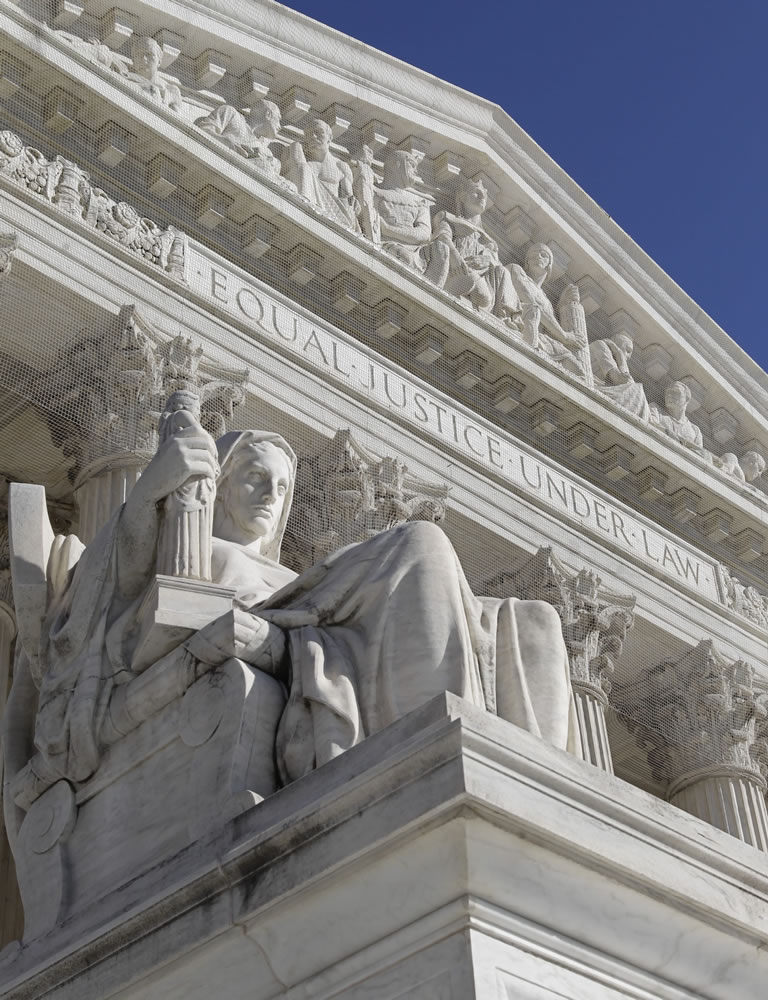As the Supreme Court revisits the use of race in college admissions next week, critics of affirmative action hope the justices will roll back the practice. A report out today bolsters their optimism: Leading public universities at some of the nine states that don’t use affirmative action create meaningful diversity on campuses in race-neutral ways.
The report, by Richard Kahlenberg, a senior fellow at the Century Foundation and advocate of class-based affirmative action, calls those states’ race-neutral policies largely successful. The University of California and others call them a failure that’s left their campuses inadequately representative of the states they serve.
Kahlenberg acknowledges that highly selective universities haven’t recovered from drop-offs in minority enrollments after voters in those states outlawed racial preferences. But at most schools, the report argues, a combination of measures — aggressive outreach, de-emphasizing of standardized tests, affirmative action based on class instead of race, and ending the legacy preferences that mostly benefit whites — has allowed minority representation on their campuses to recover to previous levels.
Seven states have banned racial preferences in admissions outright — Washington, Michigan, Nebraska, Arizona, New Hampshire, California and Florida. In Texas and Georgia, leading public universities use a race-neutral system, though the University of Texas has maintained some use of affirmative action. It’s that policy at UT that’s now before the court in a case brought by Abigail Fisher, a rejected white applicant. Arguments are next Wednesday.
Kahlenberg says the state data, compiled by Halley Potter, shows race-neutral alternatives will work.
At the University of Washington, for instance, black and Latino enrollment fell after the use of race was banned but has since surpassed previous levels. At the University of Florida, Hispanic enrollment is higher and black enrollment is comparable to before race was banned (though the report’s figures show black enrollment has fallen lately from nearly 15 percent to below 10 percent).
In Texas, diversity numbers plummeted in the late 1990s when the university wasn’t using affirmative action. The state implemented a “Top 10 percent” plan granting automatic admission to top high school students based on class rank, and its enrollment of underrepresented minorities has risen overall.
Population more diverse
But supporters of affirmative action draw different lessons from the experiences of the states trying race-neutral methods. For one thing, they note states like California, Florida and Texas are much more diverse now, so holding minority numbers steady isn’t progress. UT, which now uses race as a factor for a small part of its class, notes blacks remain underrepresented and many classrooms lack minority voices.
The nearly 100 briefs filed in the Fisher case also include several from social science researchers arguing race-neutral alternatives don’t work. In its brief supporting Texas, the University of California argues that when state voters ended affirmative action in 1996, it was unable to enroll a critical mass of black students, particularly at the two most prominent campuses — Berkeley and UCLA.
California spent tens of millions expanding outreach, de-emphasized standardized tests and adopted a policy like Texas’ Top 10 percent plan, the university told the court. But the results weren’t satisfactory. In 1995, black students accounted for 7.3 percent of admitted freshmen at Berkeley and 6.7 percent at UCLA; the figures today are 3.9 percent and 3.8 percent, respectively.
“The University of California has tried almost everything (to recruit more minority students),” said Gary Orfield, co-director of the Civil Rights Project at UCLA. “It’s true the least-selective colleges of the University of California are highly diversified, but we’ve had almost a disappearance of black students here at UCLA.”
Highly selective institutions like Berkeley and UCLA generate a disproportionate share of future leaders, Orfield says, and are key pathways to professional and graduate schools. Without using race in admissions, such universities will look hardly anything like the states they’re supposed to serve, and minority students won’t have access to critical opportunities.
Already, he said, black students are one-fifth as likely to be admitted to highly selective institutions as white students, and Latinos one-third.
Kahlenberg agrees low minority enrollments at elite institutions are a problem. But to him, the arguments all point to affirmative action based on class, not race.
“It’s far easier for universities to provide a racial preference that brings in upper-middle class students of color,” he said, than to spend money on financial aid and support services for low-income students of any race.



